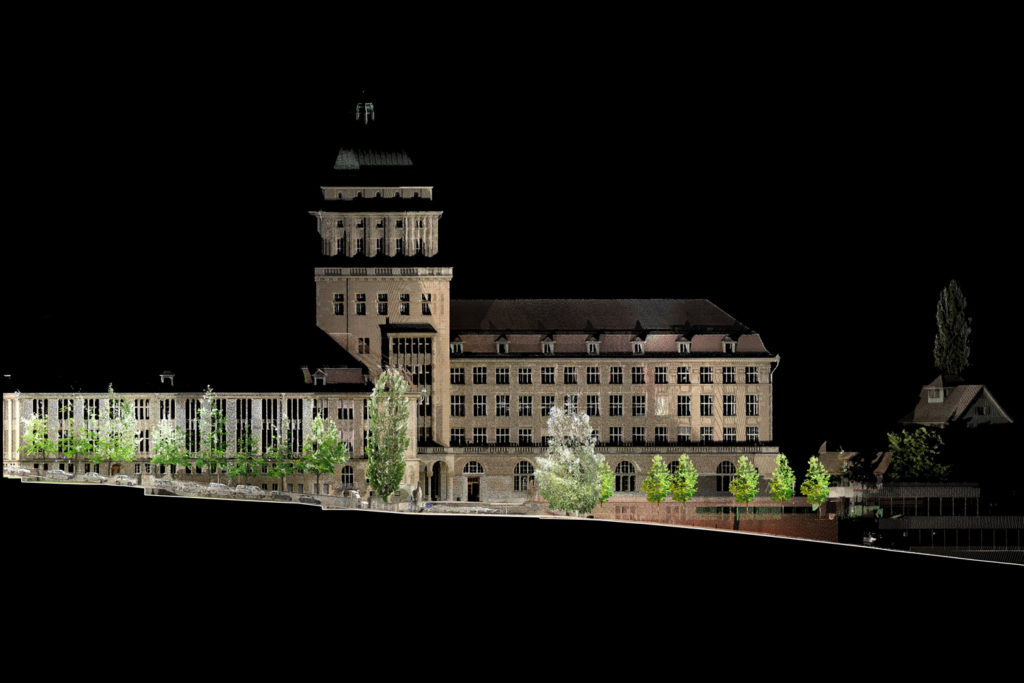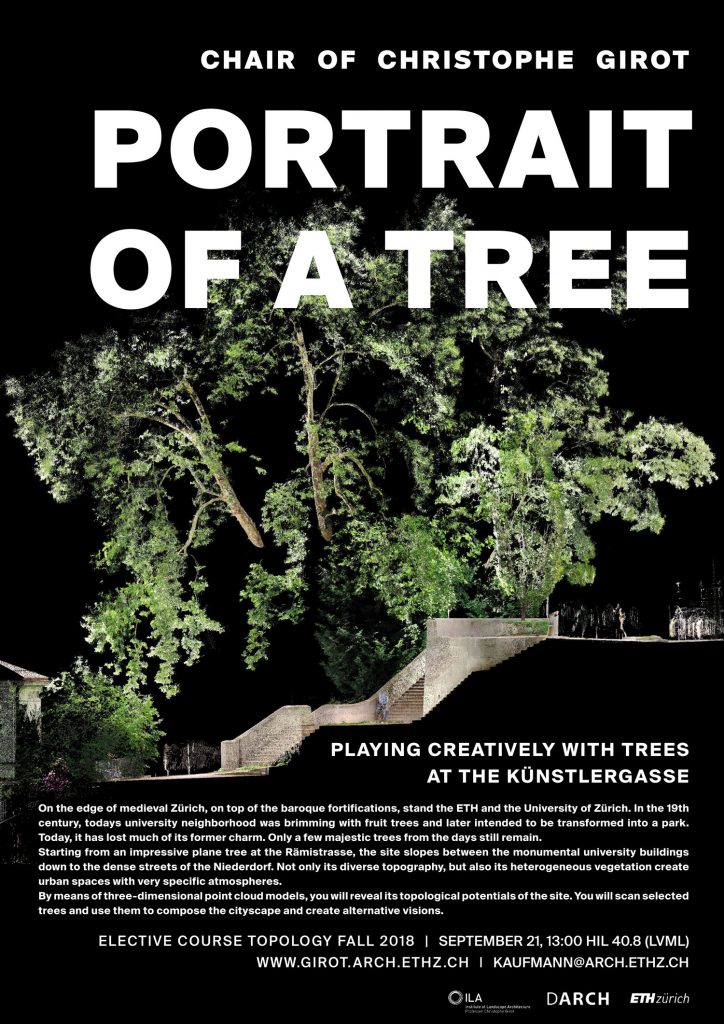
ABSTRACT
On the edge of medieval Zürich, on top of the baroque fortifications, stand the ETH and the University of Zürich. In the 19th century, what we know as the university neighborhood was brimming with fruit trees and later intended to be transformed into a park. Today, it has lost much of its former charm. Only a few majestic trees from the days still remain.
TEACHING TEAM
Prof. Christophe Girot, Dennis Häusler, Magdalena Kaufmann, Benedikt Kowalewski
STUDENTS
Cherry Yang, Andrea Roselli, Mattia Furler, Sogol Amuzegar, Valentin Ribi, Elizabeth Levy, Brendan Buchanan Dee, Reishan McIntosh, Bing Yang, Raoul Dubois, Turi Colque Lajo, Alain Vorlet, Laura Rickli, Alejandro Pérez Giner, Fabian Kuonen
CONTACT
PARALLEL COURSE
Serendipity – Ways to unlearn the City
Starting from an impressive plane tree at the Rämistrasse, the site slopes between the monumental university buildings down to the dense streets of the Niederdorf. Not only its diverse topography, but also its heterogeneous vegetation create urban spaces with very specific atmospheres.
The goal of the course is to document and analyse the site to reveal its topological potentials. Using three-dimensional point cloud models, you will comprehend this heterogeneous urban landscape. In a second step, you will scan selected trees and create a collection which will enable you to alter and compose the cityscape.
By using as a tree with all its connotations and cultural preconceptions as a tool, you will create alternative spatial visions.
A weekend workshop, historic documents and lectures will support the students during the semester. Language of instruction is English; Assistance in English and German.
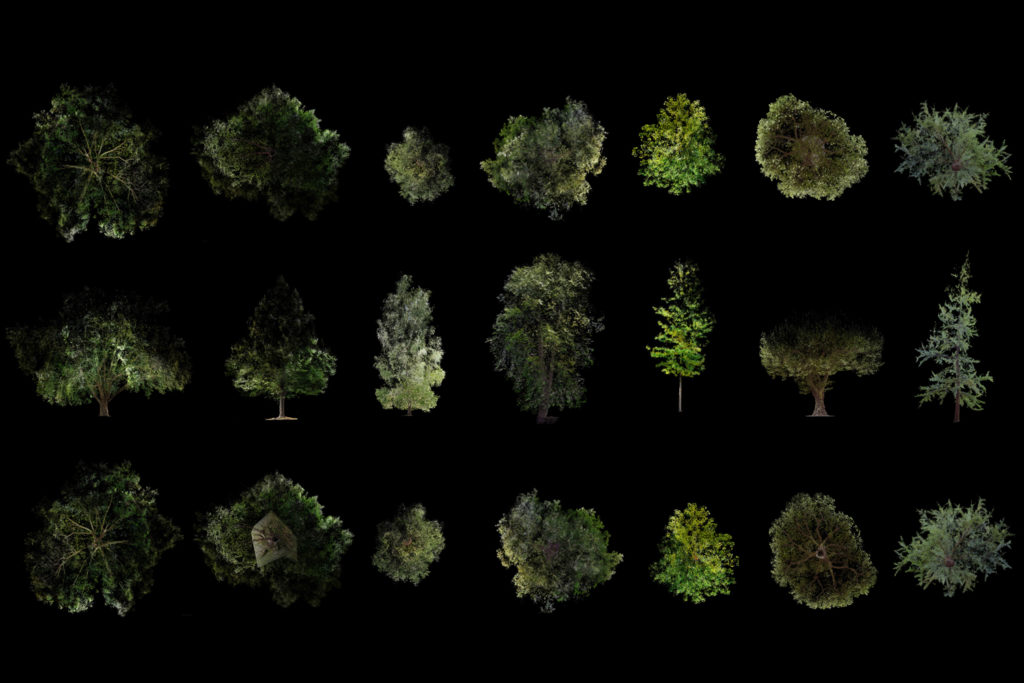
Tree Library collective student work
«The image of the tree that we carry in our minds seldom appears in reality. We have the tree of life, the tree of knowledge, the tree of justice, the tree of Christ, but does this heritage contribute to a better sentiment about nature, or rather a sentiment about our own humanity?
Although its representations have changed considerably between different cultures, the tree remains a reassuring constant in our daily and yearly cycles. The fact that we can never stand in its place unless we chop it down makes the tree quite different from us. Although we sometimes evoke the ancient times when we lived up in the trees, no one except a child or idealistic tourist could think of spending more than a few hours living in its branches. The tree
is sometimes seen as a green man, personified by limbs reaching for the sky which tell us of their age as they crack and squeak in the wind. But how does all of this lore relate to the city? »
– extract from Framing a Tree – a truncated reality by Christophe Girot
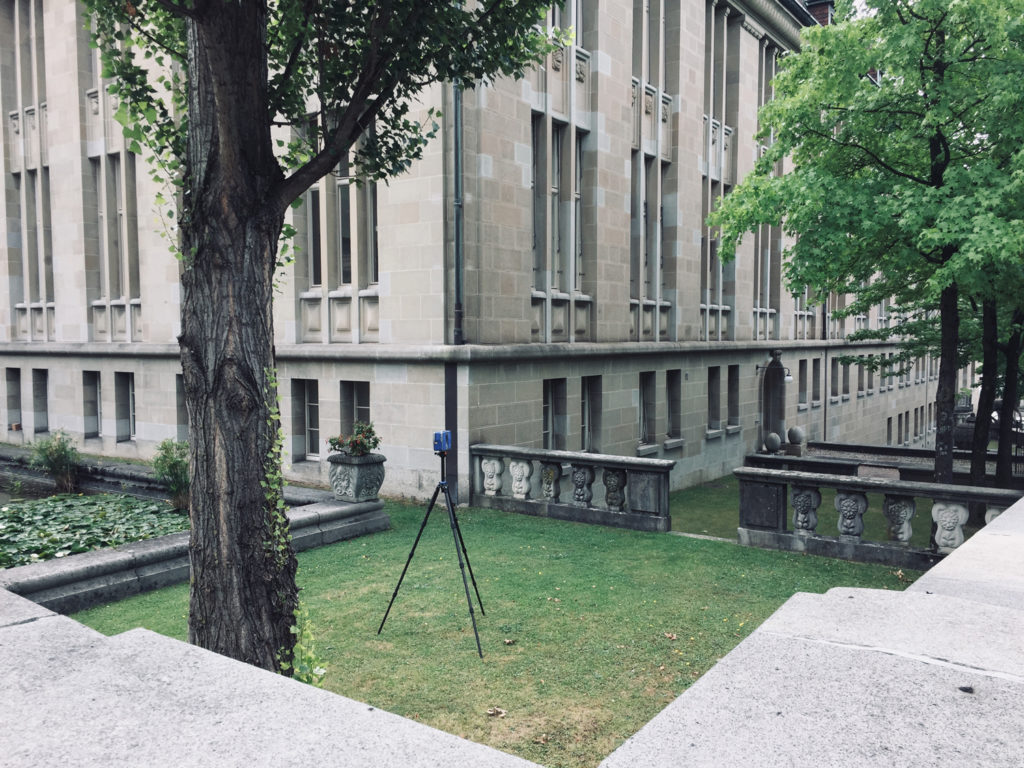
scanning on site | Hochschulquartier Zurich
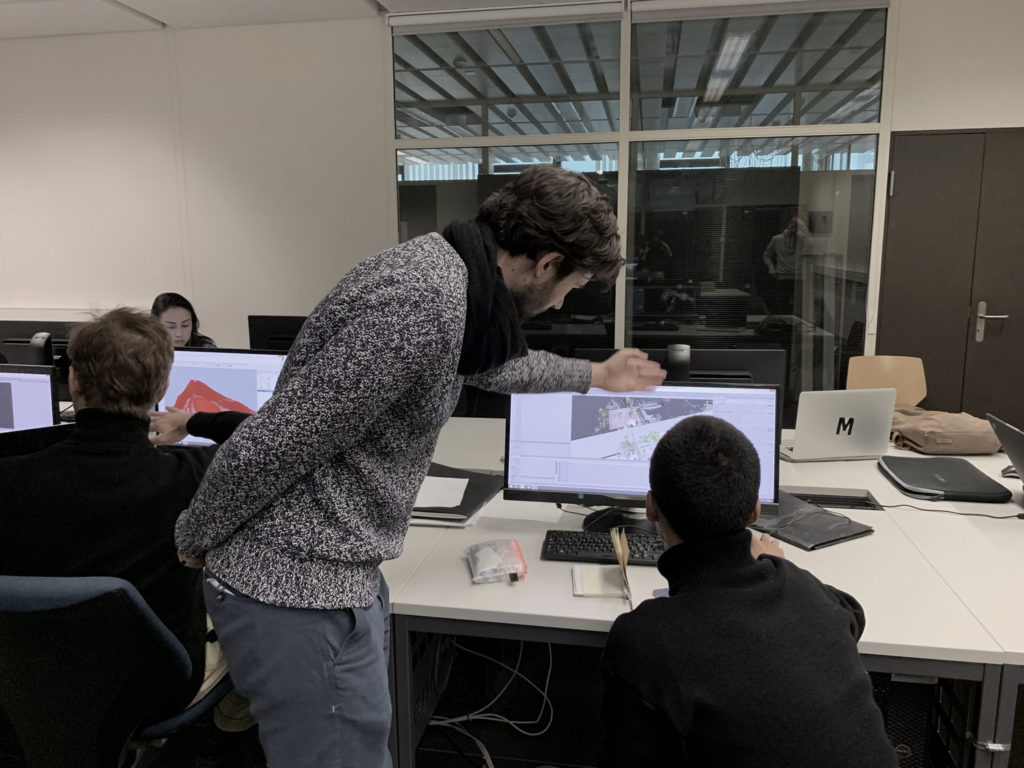
point cloud manipulation in the LVML
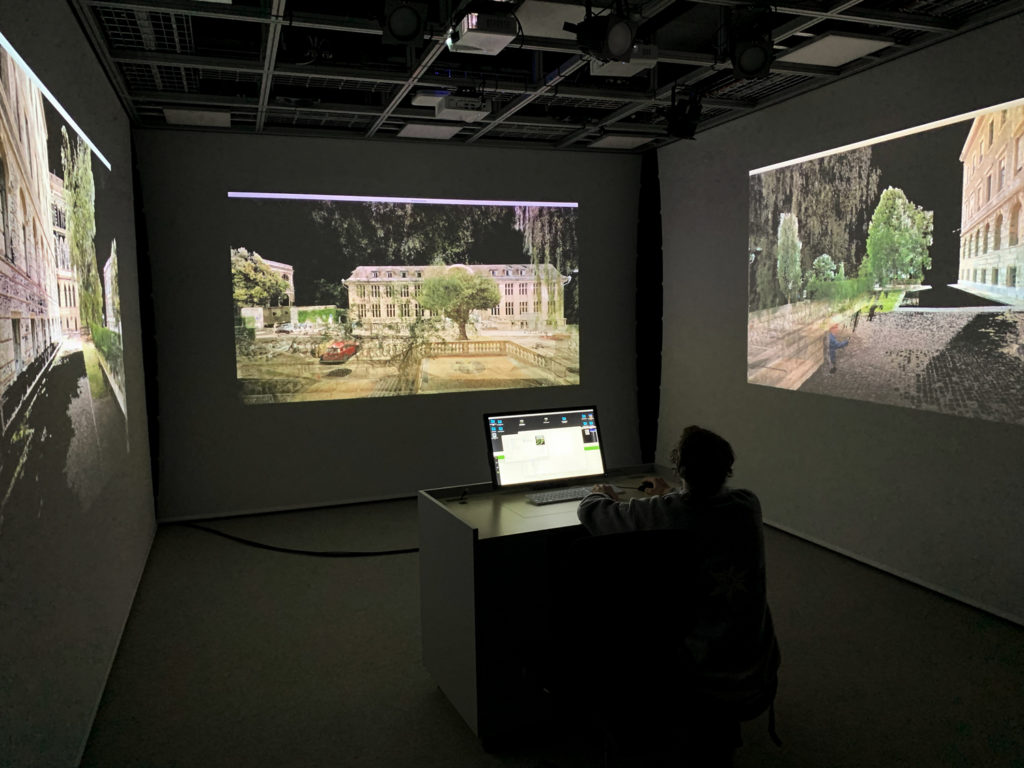
digital walks though the point cloud model in the Audio Visual Lab
Technique
After the on-site workshop where the students scanned urban situations, they were asked to manipulate the acquired point cloud models. Firstly extracting single trees from their surroundings – digitally uprooting them – manipulating their color and point density and adding them to a «tree-library». Provided with this collective library they started to collage a plantation intervention within the three-dimensional model. Positioning fully grown trees as well as young vegetation with the expectations of growth. Their task was to restructure the urban spaced my minimal interventions – by strategically positioning trees.
To prove their concepts and test the interventions, the point cloud models were taken to Unity for real time walks in digital space. Testing it over and again until the final presentation where each student took the group of critics for a stroll in the digital model – discussing the intervention and observing it from all angles.
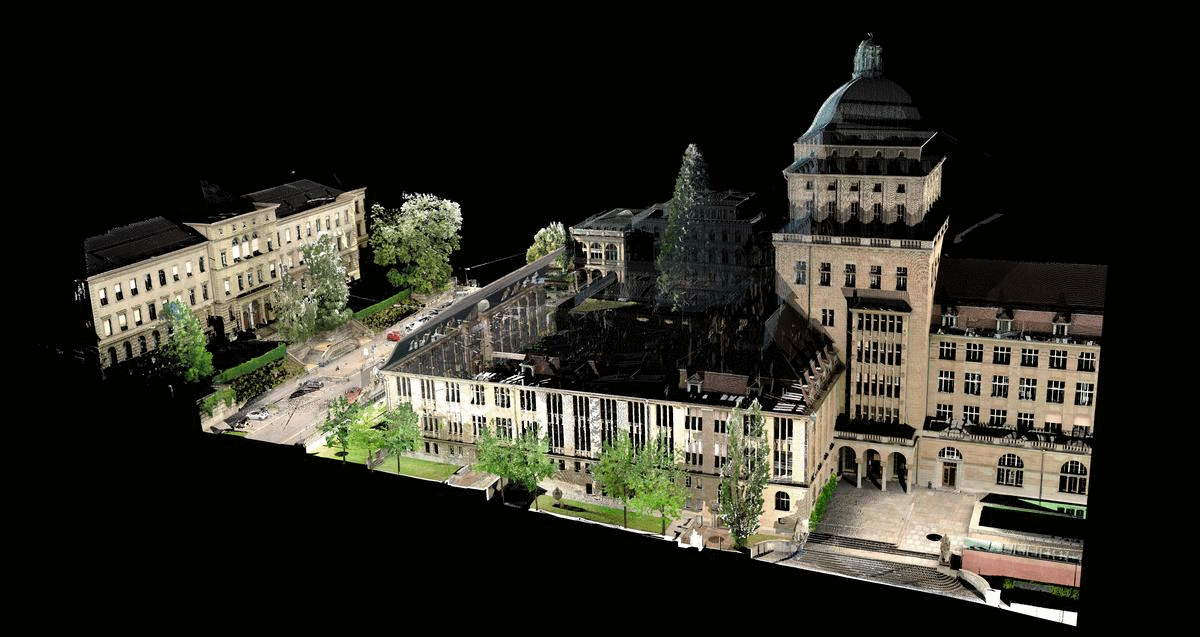
student work process analysis and design through section
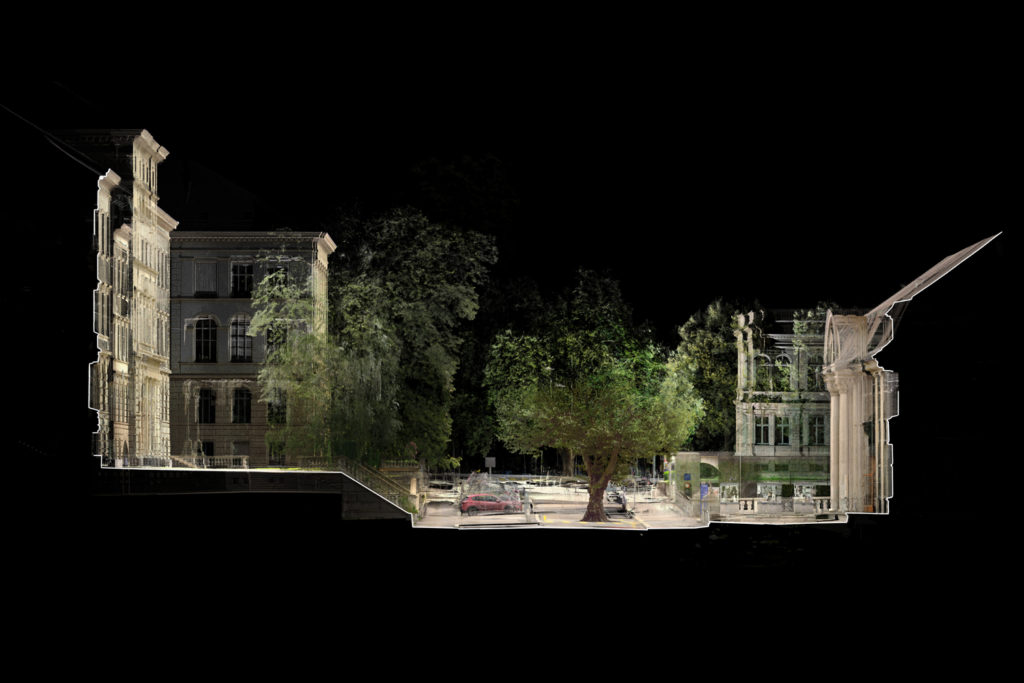
student work by Fabian Kuonen
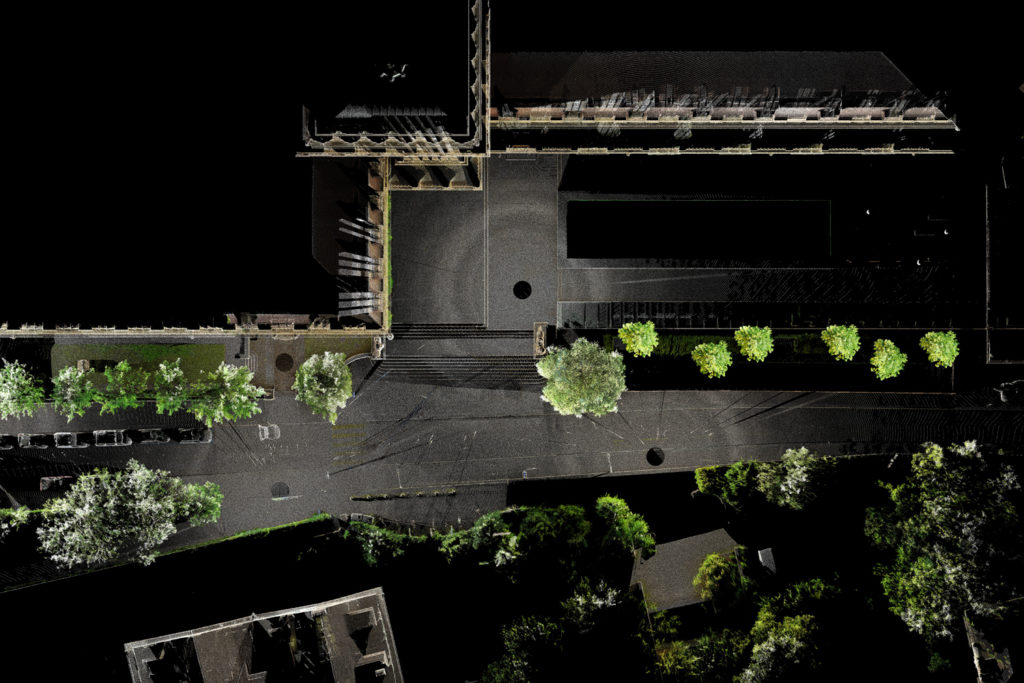
student work by Reishan McIntosh
